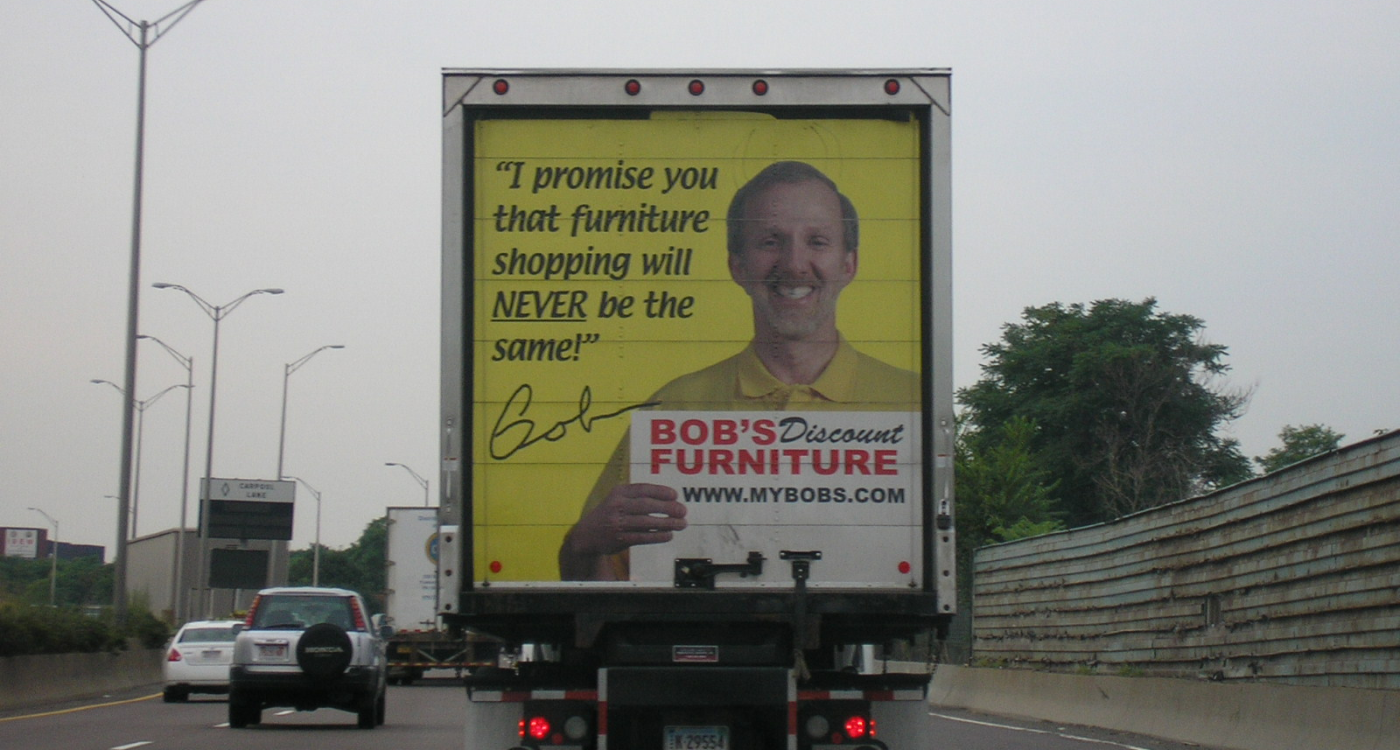
Bob Kaufman never intended to become one of the most recognized faces on television commercials. Kaufman describes himself as an "extreme introvert" who just wanted to stop working for someone else. But through a combination of authentic salesmanship, relentless advertising, and an almost obsessive focus on customer value, Kaufman turned a single furniture store into a billion-dollar empire that redefined how America shops for furniture.
From Catastrophe to Opportunity
Kaufman's path to retail fame began with a devastating motorcycle accident in 1976. While working as a manager at Radio Shack, he became distracted on his way to a meeting and crashed into a telephone pole. Doctors almost amputated his right leg and predicted he'd never walk again.
During his year-long recovery, a friend recommended he try sleeping on a waterbed. It transformed his sleep and, ultimately, his life. Despite describing himself as "very risk-averse," Kaufman decided to sell the waterbeds that had saved him.
His strategy was simple: lease space inside larger furniture stores and focus purely on value. By the 1980s, he was operating in 24 stores throughout New England. But when the waterbed industry crashed in 1990, Kaufman faced a crossroads.
In 1991, during a recession when furniture stores were closing left and right, Kaufman and his partner Gene Rosenberg opened Bob's Discount Furniture in a bankrupt furniture store in Newington, Connecticut. They negotiated an unconventional deal: the landlord covered taxes, heat, and utilities in exchange for a percentage of sales. This kept fixed costs low and allowed them to focus on moving volume, while offering deeper discounts than competitors.
The Anti-Salesman Who Became the Brand
When Kaufman told his father, a decorated World War II veteran and advertising executive, that he planned to do his own commercials, the response was brutal: "Son. I love you dearly, but you look like crap and your voice is worse. Don't do it."
Kaufman ignored the advice and created one of retail's most successful advertising strategies. By 1997, Bob's was broadcasting roughly 500 commercials a week in Connecticut alone.
"The reason it works is because every business wants customer attention. But how do you get through the din? By not being your typical pitchman. By having a scratchy voice. By dressing in jeans and a polo shirt," Kaufman explained during a rare speech to business students at the University of Connecticut. "I would work at the warehouse, go do an ad, and go back to the warehouse in the same clothes. People feel like they know me.”
This wasn't accidental, it was strategic. In an industry built on slick salespeople and negotiable prices, Kaufman presented himself as the neighbor who happened to sell furniture.
The Psychology of Stress-Free Selling
Kaufman made a crucial discovery about furniture buying: it's the third most stressful purchase experience after buying a house or car. So he put free cafés in every store. "When I'm chewing on a cookie, I can't be stressed," he reasoned. "A lot of people stop in after lunch for a cookie, a piece of candy or a cup of coffee. They are always welcome. They may not buy something today, but they'll be back."
This wasn't just hospitality, it was sales psychology. By removing pressure and creating comfort, Kaufman transformed the furniture buying experience. Customers could browse without harassment, snack without obligation, and buy when they were ready.
Building the Sales Machine
Behind the folksy commercials was a sophisticated sales operation. Every employee had to complete three weeks of training before hitting the floor. Depending on success, salespeople could earn between $40,000 and $100,000 annually.
Kaufman's partner Gene Rosenberg gave him advice that became company doctrine: "It's all about your people. If the people who work for you aren't happy, your customers won't be happy." Kaufman made it a point to personally meet every employee. "I don't want anyone to say, 'I work at Bob's Discount Furniture, but I've never met Bob.' We run it like a small, family business."
The Values That Built an Empire
When Raymour & Flanigan offered to buy the company, Kaufman's response revealed his true priorities. "We had 500 employees. I knew them all by name because I'd hired them. All of these people helped me to grow, and if we sold, many of them would be out of work. We declined."
This wasn't just sentiment—it was smart business. By prioritizing employee stability and customer value over quick profits, Kaufman built sustainable competitive advantages that private equity eventually couldn't ignore. Bain Capital acquired the company in 2014. Kaufman remains actively involved, but is no longer the face of the brand, he’s been replaced by “Little Bob”, a cartoon character designed in his likeness.
Today, Bob's Discount Furniture operates 189 stores across 24 states with over $1.1 billion in annual sales.







